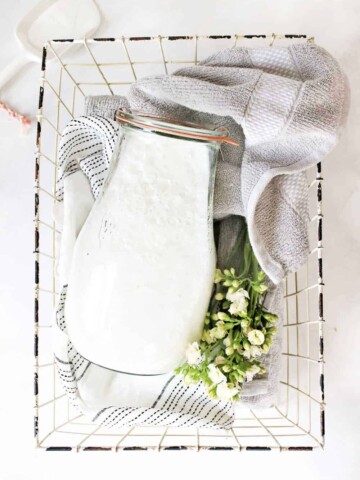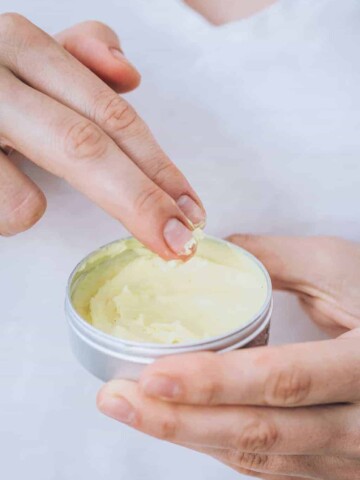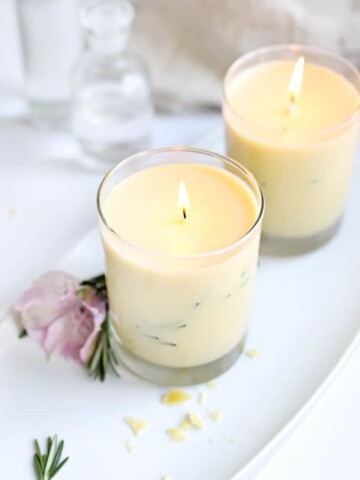Learn how to extract and store fresh aloe vera gel, so you always have some at the ready for aloe water or adding to other recipes. Here's how to harvest aloe vera gel to get the greatest benefit from this magical plant.
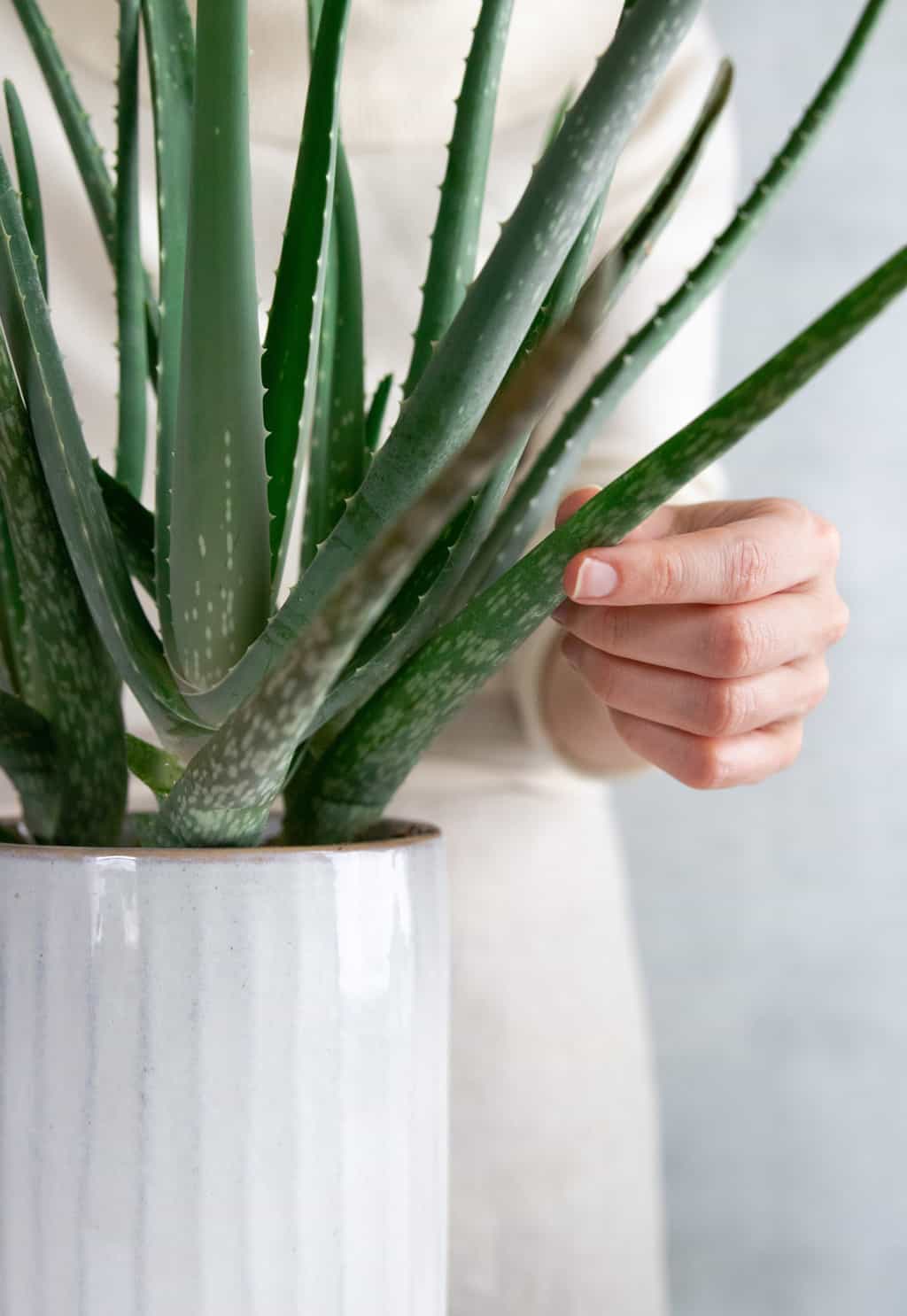
I have a soft spot in my heart for aloe plants. As someone with a notoriously brown thumb, houseplants have never really been my cup of tea. But thanks to sensitive skin and an occasionally fiery immune system, I took a chance one day and brought a few aloe plants home from the farmers market.
Turns out that using fresh aloe is a bit different (and better for you!) than using the bottled kind. And if you're anything like me, once you make the switch, you'll never go back to the bottled stuff again.
Jump to:
Why Use Fresh Aloe Vera Gel
By now, I think we're all familiar with the topical uses of aloe. It's a fabulous healer for burns, cuts, and other skin ailments [source], and it has beauty-boosting properties to boot. Thanks to an array of vitamins, minerals, and phytonutrients, aloe vera is an anti-inflammatory powerhouse.
But it's not just your skin that reaps the benefits. Aloe's healing properties work just as well on our insides as they do on our outsides. When eaten, aloe vera aids digestion, decreases inflammation, and promotes healing of the digestive tract [source].
And, for those of us with brown thumbs, aloe is one of those set-it-and-forget-it plants that does best when you don't over-tend to it. With minimal effort, aloe plants will thrive in most households—even with little sunlight and water.
But if growing the plant isn't your cup of tea, you can usually find large aloe leaves at your local health food store. Removing the gel from store-bought leaves is the same as harvesting it from the plant, so read on or watch the video below to see how it's done:
How to Harvest Aloe Vera
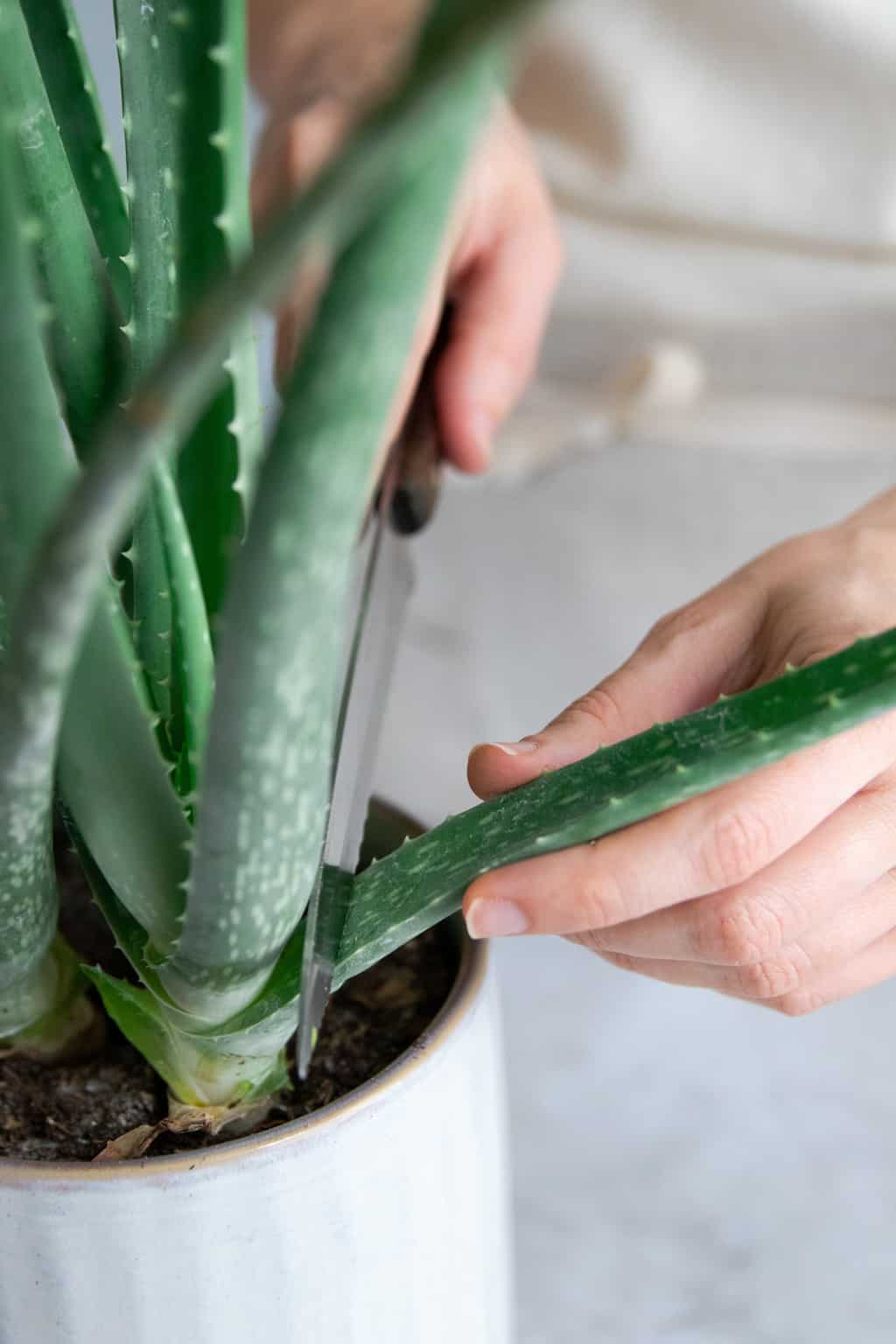
Step 1 | Cut off a leaf
Select a large, unblemished leaf, and using a sharp knife, cut the leaf as close to the stem as possible.
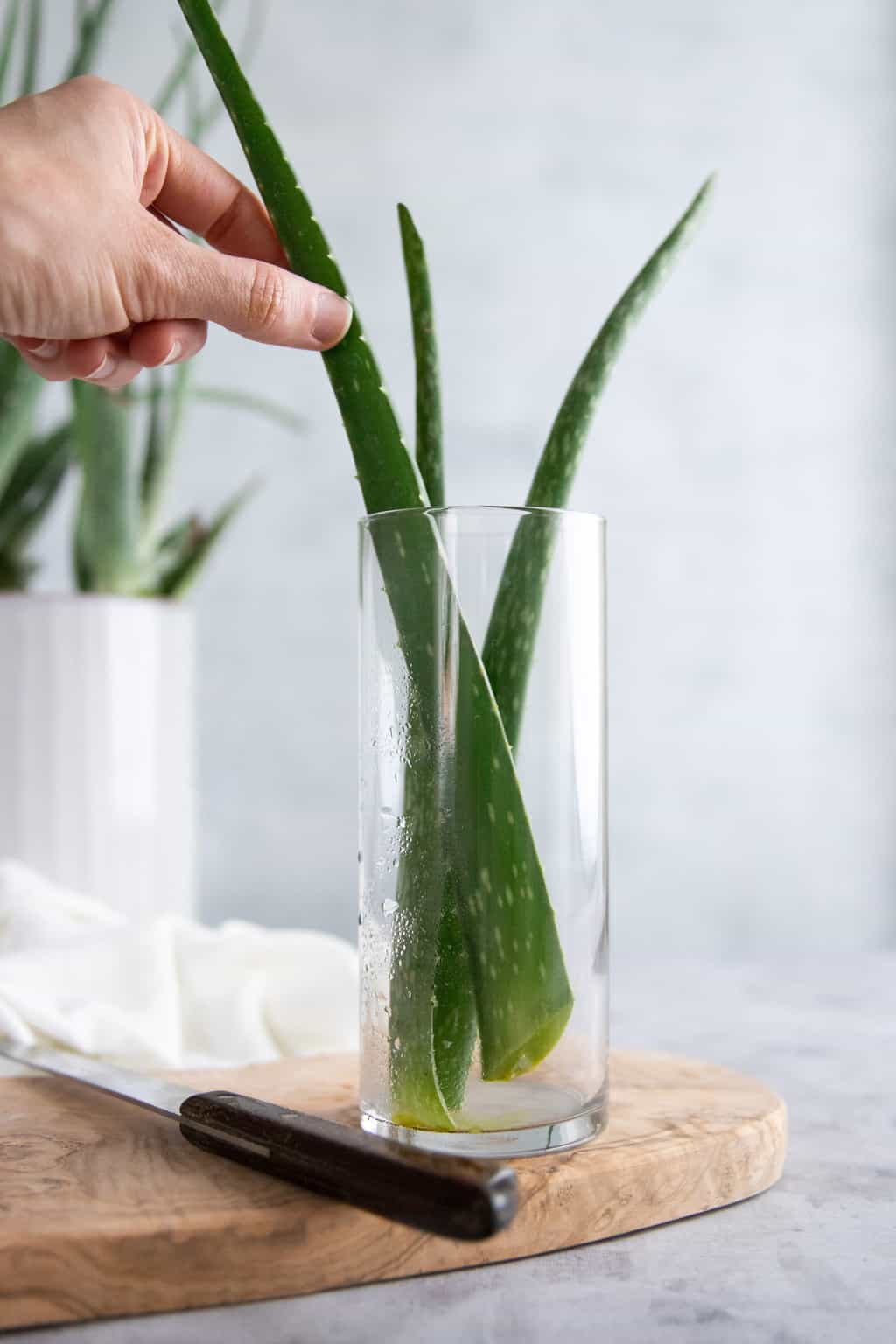
Step 2 | Drain
If you plan to eat the gel, be forewarned: aloe leaves contain aloin, a yellowish-orange sap that can cause impressive diarrhea. This sap is produced near the stalk, so after removing a leaf, let the aloin drain from the end and discard it before consuming the gel.
Lay the leaf on a flat surface or place it cut-end down in a drinking glass and let the yellow sap drain from the cut end. Then rinse the leaf and pat it dry.
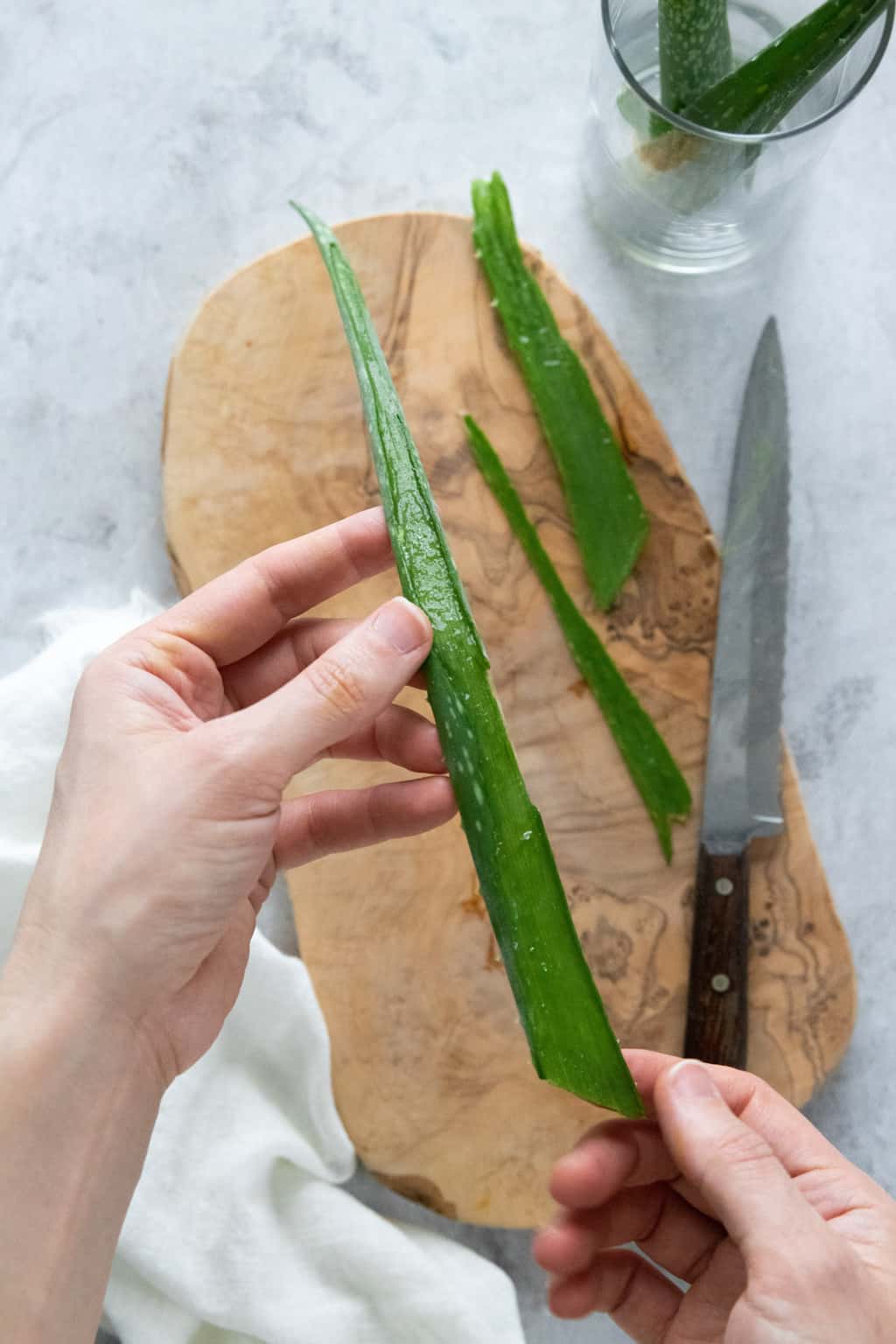
Step 3 | Cut aloe vera leaf in half
Lay the leaf flat on a cutting board, then cut the aloe vera leaves into halves lengthwise and use a paring knife to remove the skin from the top as best you can.
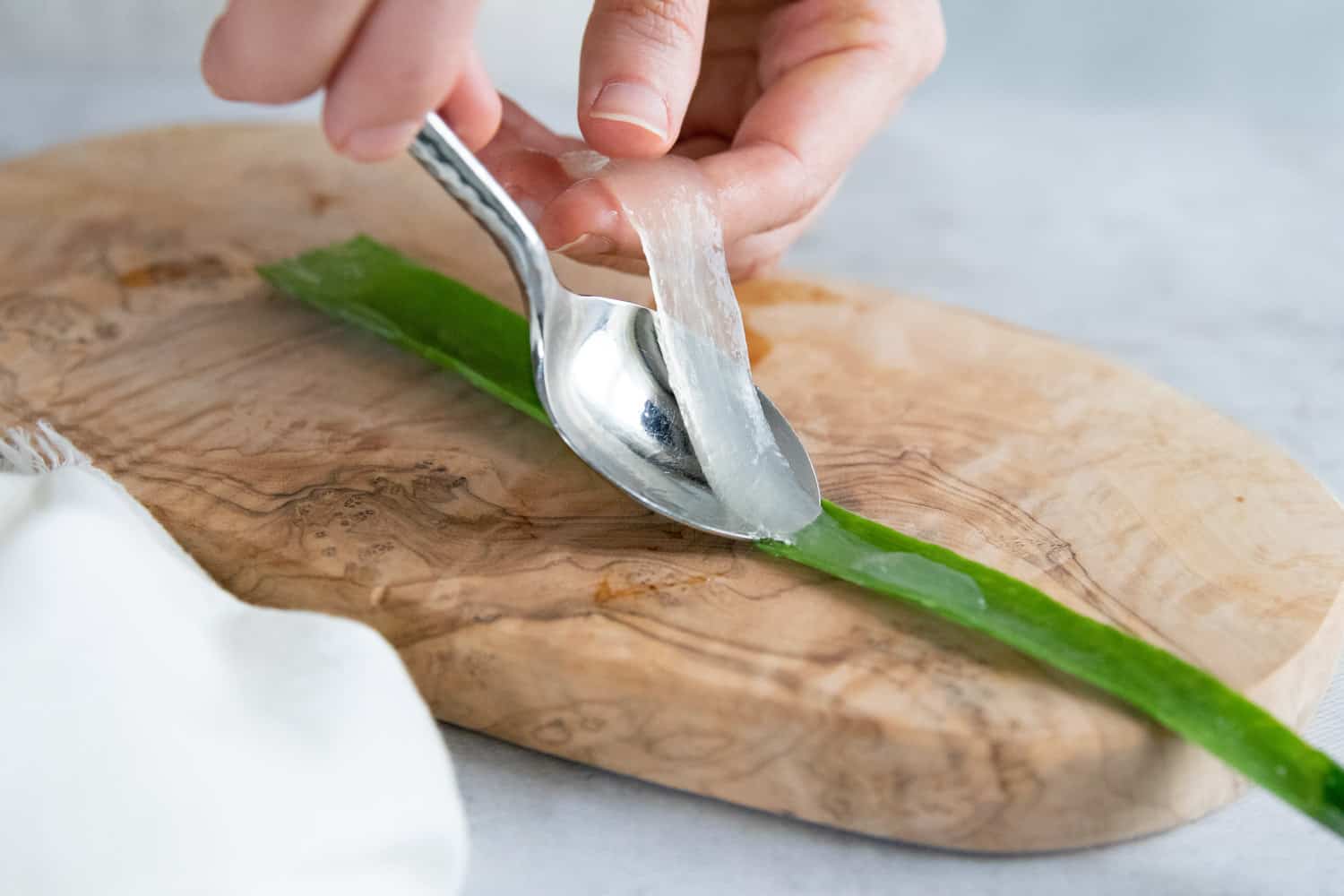
Step 4 | Scoop
Use a spoon to scoop out the translucent gel.
To use, apply the gel directly to the skin or freeze and apply to inflamed skin, cuts, or wounds. To eat, you can add to smoothies, drinks, or salad dressings immediately after harvesting.
How to Store Fresh Aloe Vera Gel
Fresh aloe only lasts a few days before it starts to break down. On those occasions where you can't use all the gel immediately, don't throw it away. Instead, follow these storage tips to extend your aloe's shelf life.
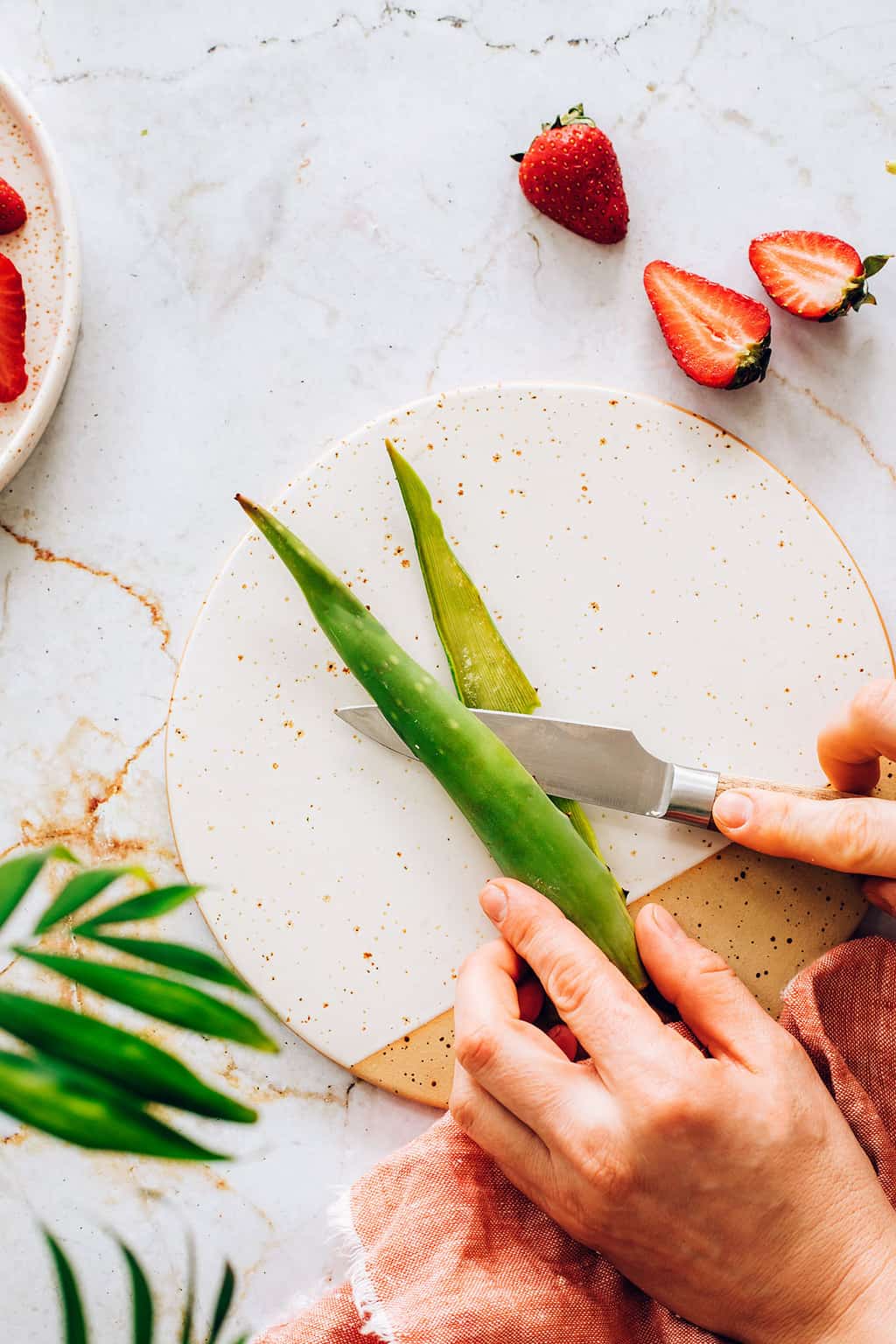
3 Tips for Short-Term Storage
If you plan to use your aloe gel quickly-ish, say for smoothies or to soothe a sunburn, then go ahead and pop it in the fridge for short-term storage. Here's how to keep it fresh:
1. Refrigerate the whole leaf.
Wrap the cut end of the aloe leaf in plastic wrap and put the whole leaf in an airtight bag (bonus points if you can remove a lot of the air from the bag). Refrigerate for up to 10 days. When you're ready to use it, let the leaf come to room temperature slightly before removing the skin and scooping out the gel.
2. Extract and refrigerate the gel.
If you've already scooped out the gel, then cut the gel into cubes as best you can and place it in an airtight glass jar or plastic container. Store it in the fridge for up to 7 days. When ready to use, simply toss a couple of cubes into your morning smoothie or rub the cooled gel over the skin to soothe sunburns.
3. Add a preservative.
If you want, you can extend your aloe's shelf life with the help of a natural preservative, like vitamin C. Combine the gel from one aloe leaf with a crushed 250 mg vitamin C tablet in a blender or food processor and puree until smooth.
Transfer the blended gel to an airtight container and store in the refrigerator for up to a month. Just note that vitamin C is acidic, so you don't want to rub it on inflamed or irritated skin!
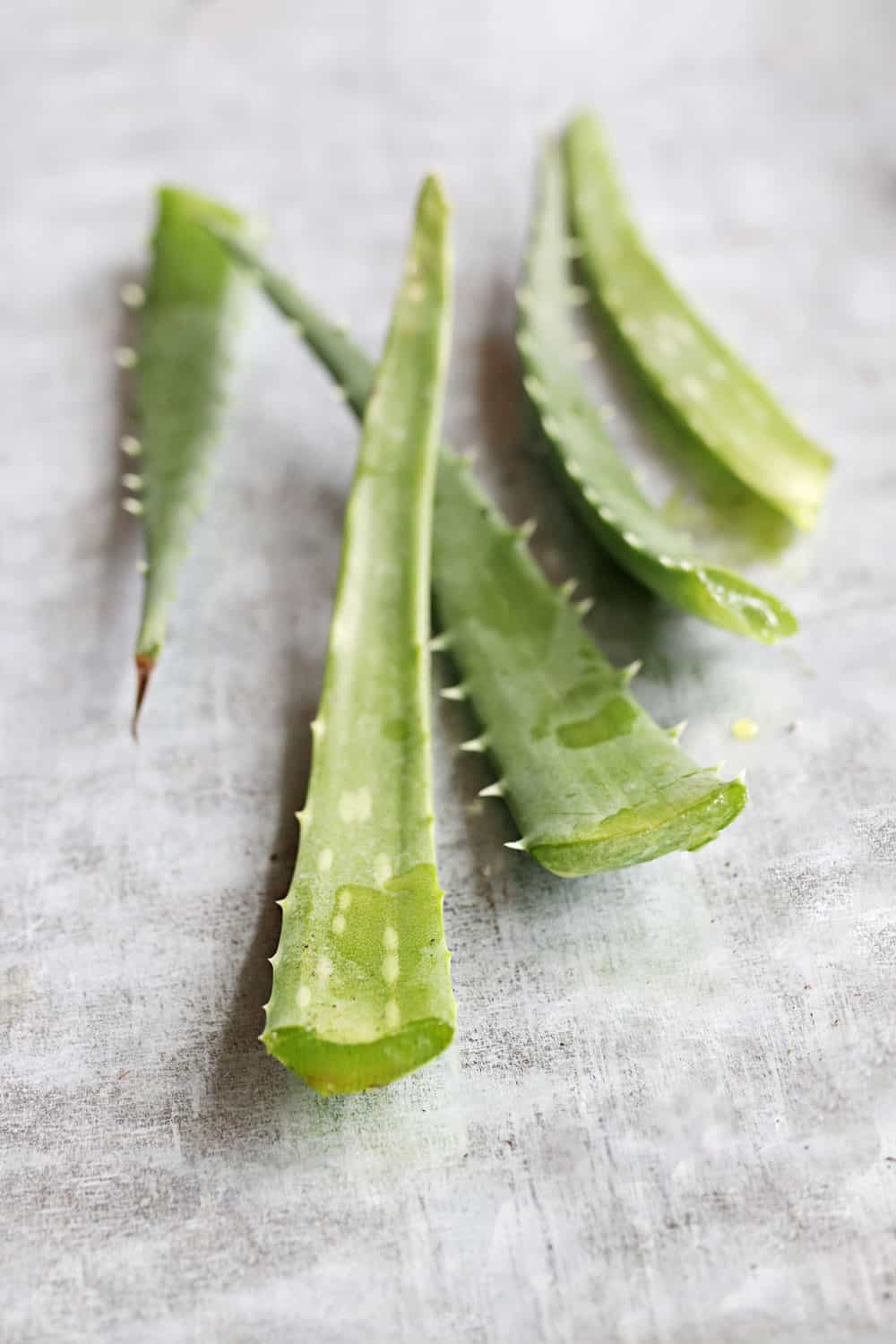
4 Tips for Long-Term Storage
It's best to keep any leftover aloe in the freezer for long-term storage. Here are some tips to make sure your aloe stays fresh for months:
1. Freeze the whole leaf.
Cut the leaf into large pieces, place them in a plastic bag, and freeze until solid. The skin acts like an airtight container that keeps out air, light, and anything else that may degrade your aloe gel. Frozen aloe leaves should last for at least 6 months.
2. Freeze just the gel.
You can also divvy the fresh aloe vera gel up among the compartments of an ice cube tray and freeze it. Transfer the chunks to a lidded glass jar and store in the freezer until ready to use. Frozen aloe vera gel should last for at least 4 months.
3. Let it thaw slowly.
Whatever you do, don't thaw your aloe vera using warm water, the microwave, or any other heat source that may damage the gel. To defrost, place the leaves or gel cubes on a plate and let them sit at room temperature for several hours.
4. Use an amber-colored container.
It's not just air that breaks down aloe; light can do it, too. So, if you have any amber-colored jars or bottles, they will keep your aloe gel fresher than a clear container.
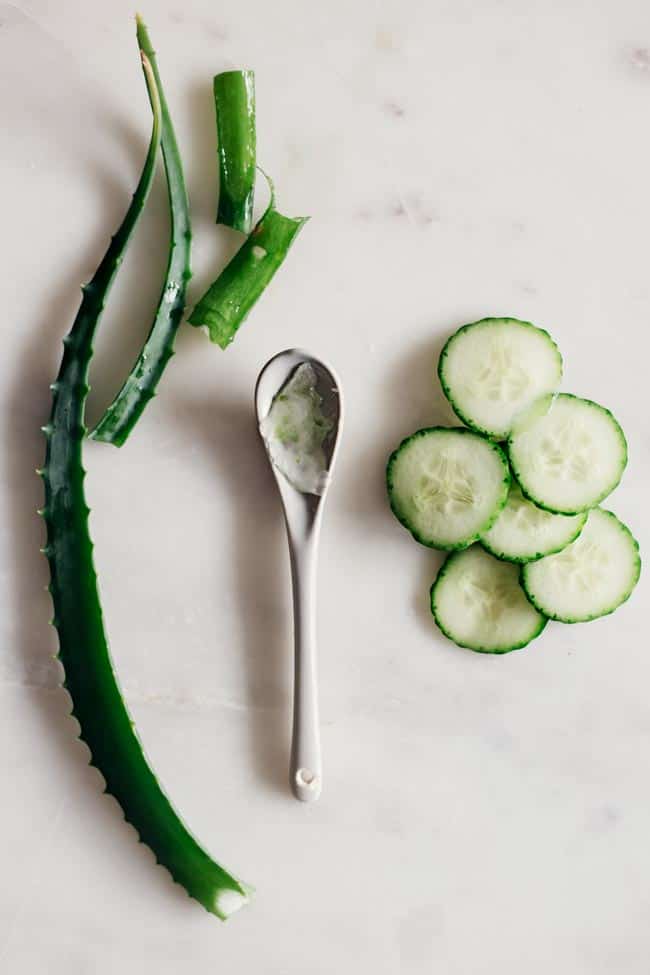
Ways To Use Fresh Aloe Gel
How about...
- 12 Aloe Beauty Recipes
- 10 Amazing Aloe Drinks
- 15 Edible Aloe Recipes to Nourish Your Skin
- 7 Anti-aging Aloe Face Masks
Do you have some interesting ways to use fresh aloe gel? Let us know in the comments!
FAQ
Yes, although be forewarned, fresh aloe vera goes bad pretty quickly. Without chemical stabilizers (like those used in commercial aloe vera products), fresh aloe gel and any products made with it should be refrigerated and used within 7–10 days.
The leaves that have been cut won't regenerate, but the plant will continue to grow new baby leaves that will replace the cut leaves.
If done rather infrequently, removing leaves shouldn't hurt the plant. In fact, trimming the older leaves can help the plant focus its energy and resources on nurturing new growth, which will give you a stronger, healthier plant.
But cutting off leaves too frequently can weaken the plant and kill it. Only cut the mature, outer-most leaves on the plant using a sharp blade. If you don't have any large, mature-looking leaves, it's best to let the plant grow some more before attempting to harvest the leaves again.
References
Hekmatpou D, et al. The effect of aloe vera clinical trials on prevention and healing of skin wound: a systematic review. Iran J Med. Sci. 2019.
Surjushe A, et al. Aloe vera: a short review. Indian J Dermatol. 2008.
This article was medically reviewed by Dr. Gina Jansheski, a licensed, board-certified pediatrician with more than 20 years of practice experience. Learn more about Hello Glow's medical reviewers here. As always, this is not personal medical advice, and we recommend that you talk with your doctor.
243
